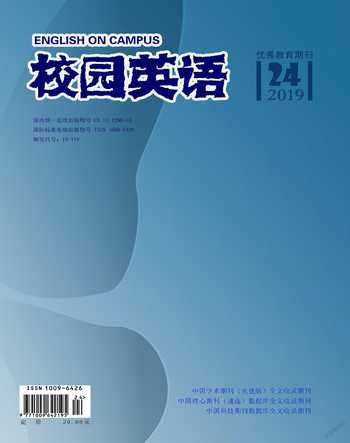Rethinking Eugene Nida’s Functional Equivalence Theory
2019-09-10祝晓
【Abstract】Functional Equivalence Theory is considered as one of the most influential theories in the translation circle. Over the decades, it has gained both high appreciation and drastic criticism. This paper is going to rethink its uncertainties.
【Key words】Functional Equivalence Theory; Eugene Nida; translation studies
【作者簡介】祝晓,中国人民大学。
1. Controversy in the term
Metatranslatology is a philosophy of translation theories and sets up rules to check whether some translation criterion is properly established. (Gu, 2002). In Metatranslatology, the first and foremost is to illustrate what sort of terminology could be theoretically valid.
Originally, the word “equivalence” means something that is “equal in value, amount, meaning”. It is normal to use it in most cases of daily life and academic disciplines to denote “equalness”, but when it is employed in translation studies, a problem occurs. All of us know clearly that to “translate” means to “change” and “remove”, so it would be ridiculous to think that something is still equal to itself after being changed and removed into another language. The words “correspondence” and “closeness” would be better and more accurate.
2. Contradiction in the theoretical basis
Although he denied having borrowed ideas and terms from Chomsky, Eugene Nida seemed to have simplified the three-layer Transformational-generative Grammar into a two-layer one, in which the surface structures can be traced back to universal deep structures by means of transformational rules. Nida skipped the initial element and squeezed the base component into kernel sentences (deep structures). He focused upon a simplified notion that languages share similarities and translation studies could proceed on such ground. Unfortunately, what he ignored is that Chomsky’s base component allows for an infinite diversity, and Chomsky emphasized that deep structure rules allow for structural diversity as well as surface differences in human languages.
Another sign of misappropriation lies in the methodology. Nida proposed a three-stage translating system where translators firstly deconstruct the source text into kernel sentences, transfer the kernels into those of the target language, and then construct translating works. While in Chomsky’s description, he provided the order of sentence formation from base and deep structures to surface structures. As we can see, Nida put the system backward and thinks that translating proceeds in a decoding and encoding pattern where the core message (kernels) never changes. But the validity of the backward deduction remains doubtful.
Chomsky himself has argued against the appropriation of his work to substantiate translation theories. While arguing in favor of universals common to all languages, Chomsky holds the opinion that these formal properties go much deeper than the particular deep structure of a sentence in any given language. Thus the theory is not designed for comparing two specific languages.
Chomsky discounted the Sapir Whorf Hypothesis which stresses the influence posed by cultures, and extracted universal characteristics of human languages out of specific cultural contexts. Nida, nevertheless, pays special attention to cultural contexts of the target language. He therefore advocates that translators should not only possess a good command of multiple languages, but also acquire a sound and profound knowledge of the target culture. This contradiction further explains that FET cannot be fully justified.
3. Conclusion
Eugene Nida’s Functional Equivalence Theory is, with no doubt, one of the most influential translation theories in the history. Previously, research on Nida and his theory concentrated on theological intentions and the subjective nature of “readers’ responses”. This paper provides a comparatively new and more profound angle to study on its terminology and theoretical basis. While “equivalence” is a word of much controversy, Chomsky’s TG Grammar also differs from Nida’s theoretical proposals in several aspects, indicating potential misappropriation.
References:
[1]Chomsky, A. N. Syntactic structures[J].1957.
[2]Gu, Z. K. Metatranslatology[J]. Chinese Translators Journal, 2002, 23(4).
[3]Nida, E. A. Toward a science of translating[M]. Shanghai: Shanghai Foreign Language Education Press,2004.
[4]Nida, E. A. Principles of correspondence. The Translation Studies Reader (2nd ed.)[J]. London : Routledge,2004.
猜你喜欢
——Take Goldman Sachs Group, Inc as an Example
杂志排行
校园英语·月末的其它文章
- The Features of Middle Class in Victorian Era
- Impact Analysis of Internet Finance on Securities Industry in China
- Amelia: Yardstick of Woman Beauty in a Patriarchal Society
- 简析《飘》郝思嘉女性意识体现
- Creative Translation of Cultural Hybridity in Maxine Hong Kingston’s Rewriting of Fa Mulan
- On Chinese Classical Drama Translation from the Perspective of Skopos theory
